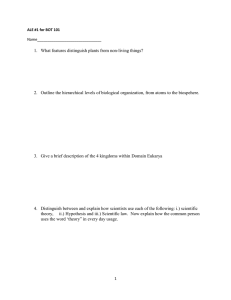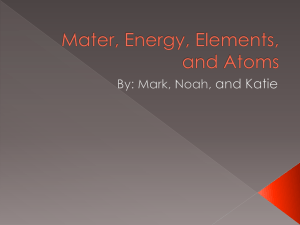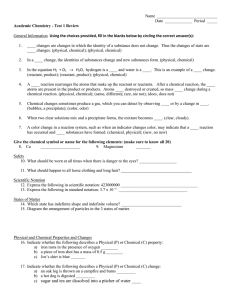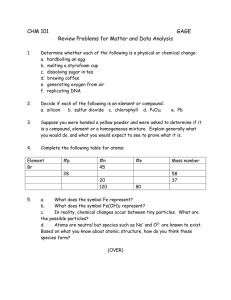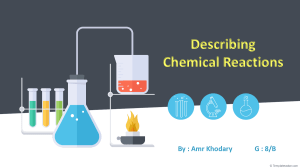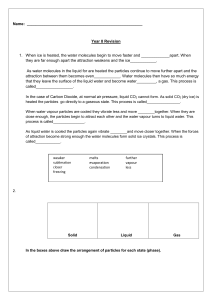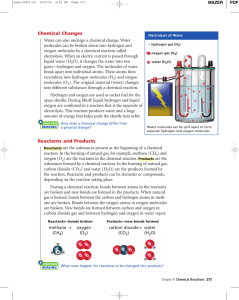Section 3.1 Outline Notes I. Chemical reactions alter the arrangements of atoms.
advertisement
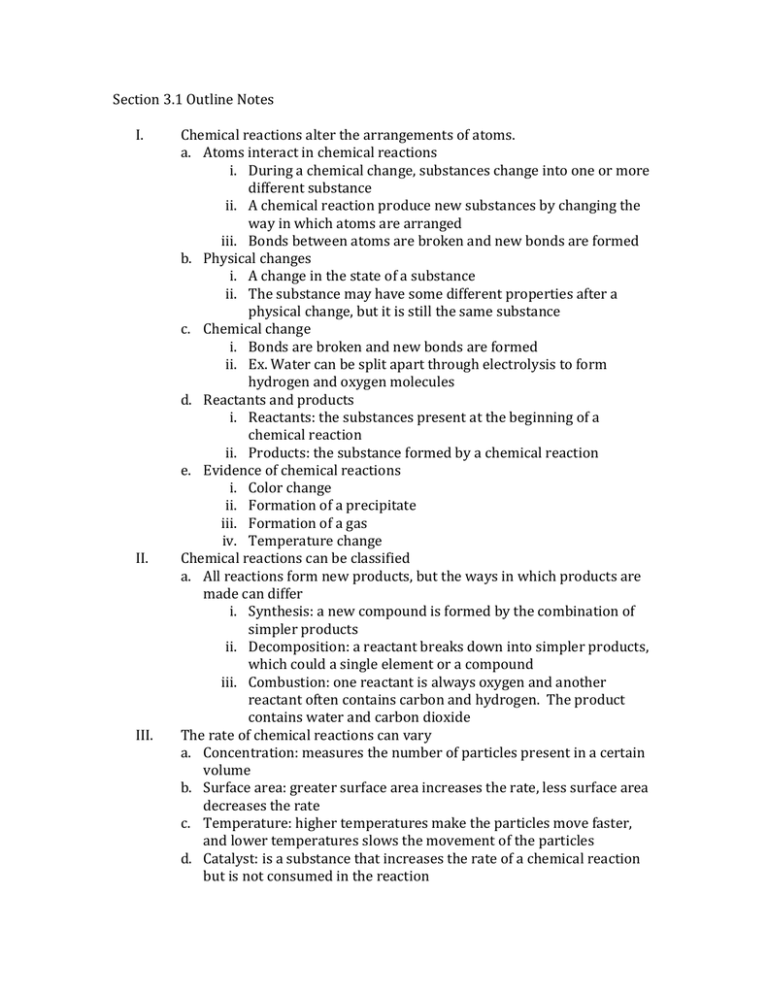
Section 3.1 Outline Notes I. II. III. Chemical reactions alter the arrangements of atoms. a. Atoms interact in chemical reactions i. During a chemical change, substances change into one or more different substance ii. A chemical reaction produce new substances by changing the way in which atoms are arranged iii. Bonds between atoms are broken and new bonds are formed b. Physical changes i. A change in the state of a substance ii. The substance may have some different properties after a physical change, but it is still the same substance c. Chemical change i. Bonds are broken and new bonds are formed ii. Ex. Water can be split apart through electrolysis to form hydrogen and oxygen molecules d. Reactants and products i. Reactants: the substances present at the beginning of a chemical reaction ii. Products: the substance formed by a chemical reaction e. Evidence of chemical reactions i. Color change ii. Formation of a precipitate iii. Formation of a gas iv. Temperature change Chemical reactions can be classified a. All reactions form new products, but the ways in which products are made can differ i. Synthesis: a new compound is formed by the combination of simpler products ii. Decomposition: a reactant breaks down into simpler products, which could a single element or a compound iii. Combustion: one reactant is always oxygen and another reactant often contains carbon and hydrogen. The product contains water and carbon dioxide The rate of chemical reactions can vary a. Concentration: measures the number of particles present in a certain volume b. Surface area: greater surface area increases the rate, less surface area decreases the rate c. Temperature: higher temperatures make the particles move faster, and lower temperatures slows the movement of the particles d. Catalyst: is a substance that increases the rate of a chemical reaction but is not consumed in the reaction



